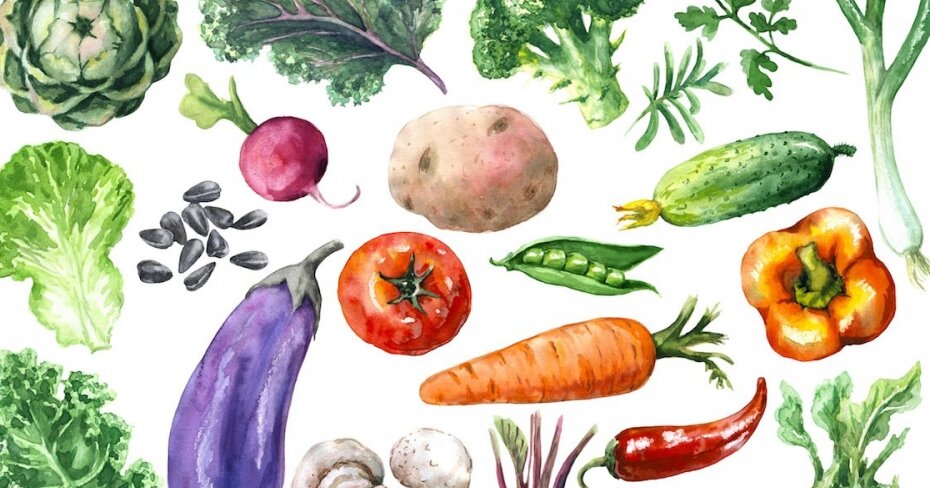Aidan the Grocery Guru gives us his best money saving tips
By: Jessica Mach on October 17, 2018
This is a story about how to save money when you grocery shop. But, be warned: it's not for the faint of heart. Sure, there are plenty of excellent money-saving tips already floating about on this blesséd earth. But today, we’re taking things one step further and equipping you with a bonafide strategy — one that actually involves writing out not one, not two, but three drafts of your weekly grocery list.
The strategy comes from our very own Aidan Potvin-O’Connell. To the untrained eye, Aidan might just seem like our excellent senior customer experience manager. But, in real, actual life, he’s also a hardcore grocery whiz, one who refers to grocery flyers as his “porn,” has been compared to “one of those people on Extreme Couponing,” and knows how to price match so elegantly that no one behind you in line will get pissed off.
He is also so clearly competent that his fellow grocery shoppers — who are otherwise total, complete strangers — have been known to approach him, in the wild, just to compliment him for his “mad skills.”
In short, we’re in capable, frugal, and widely-admired hands.
To be clear, this strategy is tailored for people who grocery shop once a week — but you can easily customize it to suit your specific needs. Aidan typically does his shopping over the weekend, but feel free to shift things around so that if you tend to shop on say, Wednesdays, the following still applies.
Happy (hardcore) saving.
Step 1: Identify your goals
Do you want to adhere to a stricter grocery budget? Eat healthier? Make sure that you only have to make one grocery run per week? It’s vital to think about what goals you aim to accomplish through this exercise, if only so that later, when you’re up to your eyeballs in flyers, you’ll remember why all the work will be worth it.
Everyone will have their own reasons. As an example, here are Aidan’s:
1. Save money
2. Waste less food
The next steps of this strategy are tailored to meet these goals. But, if your list is more ambitious, feel free to pad Aidan’s strategy with some tricks of your own.
Step 2: Prepare during the week
1. Keep a running list — in a place where you’re guaranteed to see it.
Aidan, who lives with his husband, keeps one on his kitchen counter. They update the list throughout the week.
“As we run out of things or get low on things, we’ll write them down,” he says. “So, for instance, we’re almost out of milk? Write it down. So that you don’t get to the store and realize — shit. Do we have this at home or not?”
2. Know which grocery stores are in your area — and don’t be afraid to shop at more than one.
Shopping at multiple stores is smart, partly because it gives you the opportunity to compare prices for the same items. Store A sells Quaker brand chewy chocolate chip granola bars for $3.99, while Store B is selling the exact same thing for $2.99? You know what to do.
But, Aidan says, shopping at more than one store is important for another reason, too. And that reason is that not all stores are made equal — and neither are the wares.
“I have a friend of mine who’s Vice President of Super Way Up at a national supermarket chain,” Aidan explains. “Not that that gives me any deals or the inside scoop. But I do know, for instance, with fruits and vegetables, the big grocery companies bid on the items as they come into the terminal.
“I believe Loblaws has the best bid, so Loblaws gets the first pick of what’s there… so the quality of, say, fruits, vegetables, meat — it’s sort of tiered. Depending on where you go, it’s going to be different.”
So, what’s Aidan’s advice?
Divide and conquer. “Have your higher end stores, and then your cheaper stores,” he says. If there’s something you’re willing to spend more money on to receive a higher quality version of meat or fish, for example, then by all means, shop for those things at the higher end stores in your neighbourhood. Just balance out those more expensive purchases by making sure you buy things whose quality you prioritize less — like canned goods or junk food — at your cheaper grocery store.
Step 3: Browse your flyers
1. Get your flyers, and update your list.
Think of this as plotting out your game plan. Look at the list of items you’ve updated over the course of the week, and add anything else that you want to buy.
2. Jot down the prices offered at each store you plan to shop at.
Go through the flyers for all the stores that you plan to shop at. If you need, say, milk, and see that milk is on sale at Store A, write down the price and the name of the store. Then, when you get to the flyer for Store B, find out the price that they’re offering for milk, and write that down, too. Write down and compare prices for as many items on your list as you can.
3. Write out your final draft.
Yes: a final draft. We warned you this might be a bit — how do you say — extra.
Once you’ve gone through all your flyers and updated your list, take out a fresh sheet of paper, and divide it into sections — one for each store you plan to shop at.
Then, in the section for Store A, write down all the things you plan to buy there — whether because they offer the quality that you’re looking for, or the cheaper price. Do the same in the section for Store B, Store C, etc.
How long does this whole process take? “Maybe thirty minutes,” Aidan says. In other words, probably less time than it’d take to watch an episode of your favourite show on Netflix.
4. Get your loyalty programs in order.
In Canada, there are plenty of store-specific loyalty programs you can sign up for. If you have a credit card that will allow you to earn points — all the better.
Aidan buys everything on his rewards credit card — so much so that he can “usually rack up enough [points] that… probably once every six weeks, I can redeem an entire grocery list.” Not bad!
And of course, if you’re already glued to your phone anyway, you might as well download a few coupon apps. Here’s a list of our favourites.
Step 4: Time to shop
1. Eat a snack at home.
We’ll repeat the age old adage: don’t shop on an empty stomach. Aidan also recommends chewing on a stick of gum while you shop. “I think [it] just helps mimic the eating thing, so you’re not thinking, oh I’m hungry,” he says, wisely.
2. Go to your stores with your lists and your flyers, and organize your shopping cart.
When we say “organize your shopping cart,” what we really mean is divide your items into two sections: items that need to be price matched, and everything else.
Because you’ve already figured out which stores offer the best prices for the things you need, you already know what items will go in which section. And ultimately, price matching can help save you trips to multiple grocery stores.
Let’s say you’re at Store A and you find a bag of carrots for $5. You know, from all that time you spent laboring over your flyers, that the same bag of carrots cost $3 at Store B. So, if you don’t want to trek all the way to Store B to get the cheaper carrots, you can just present your Store A flyer at checkout and ask the cashier to price match the cheaper price at the other store. Your carrots now cost $3 — and you didn’t even have to leave the more expensive store.
Also, if all your price matched items are all conveniently located in one place in your cart, then you can have the cashier deal with them all at once — and avoid holding up the line behind you.
“I’ve been behind people who say, after an item is scanned, ‘Oh those carrots are price matched,’” Aidan says. “And they’re rifling through all the items on the belt, trying to find the one they need to price match, and taking it back. And then the cashier has to void it. C’mon. No. No time for that shit. Keep it together. You’re in and out. Easy.”
Remember to check beforehand whether the stores you’re going to price match. Many big chains do it, but smaller grocers probably won’t.
3. Look at prices per 100 grams.
Let’s say ice cream is on your list, and you’re confronted with two different-sized containers of the flavor you want — and they’re both different brands. How can you tell which one is cheaper?
Here’s Aidan’s trick: find the common denominator.
“Most stores now will have the price for [an] item, and then underneath it’ll say, ‘price per 100g,’” he explains. So you have to look at that... Because the two litres might be on sale, and the one and a half litre isn’t on sale, but the smaller size may still be the better value.
“But when you break it down, the price per 100g really is the way you can decide which is better. No breakdown on the tag? Whip out that smartphone and do the calculation yourself.”
Look — it’s worth it
Maybe you’re still skeptical. In which case, Aidan has a few thoughts to leave you with.
“I appreciate that what I do can seem a bit ridiculous, time consuming and a hassle,” he says. “But I've honestly become so used to it and consider myself an efficient pro at grocery shopping it's totally worth it for us. It's certainly not for everyone, but in the long run I am able to save us a fair amount and with of money with little effort.
“After all,” he adds. “The money we save is better left in our bank account as opposed to the grocery chain's multi-million dollar account, right?”


